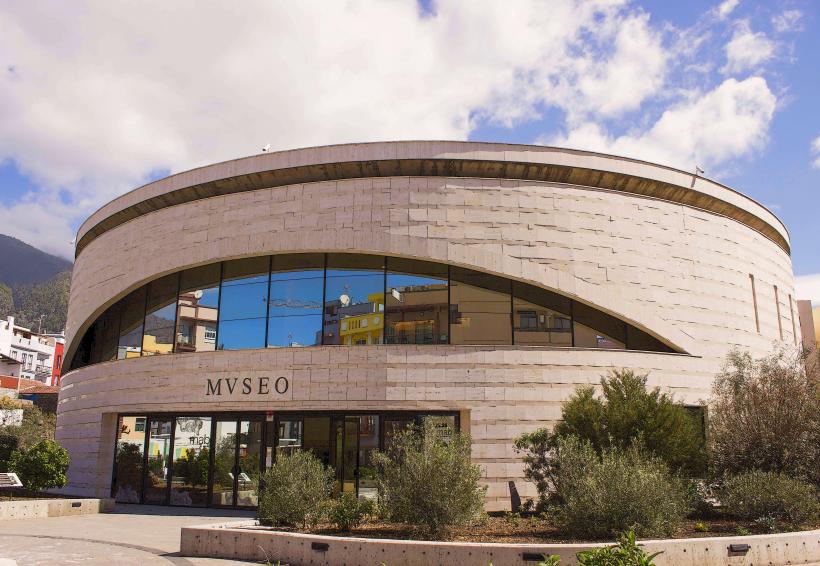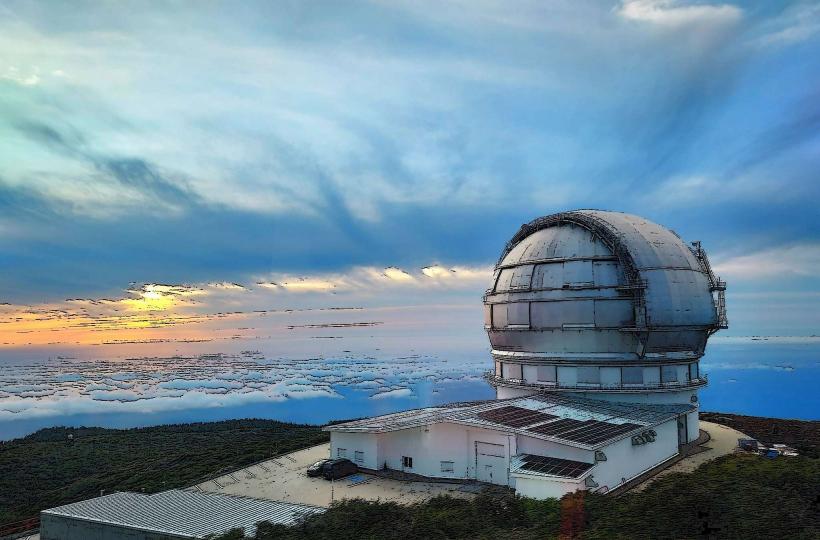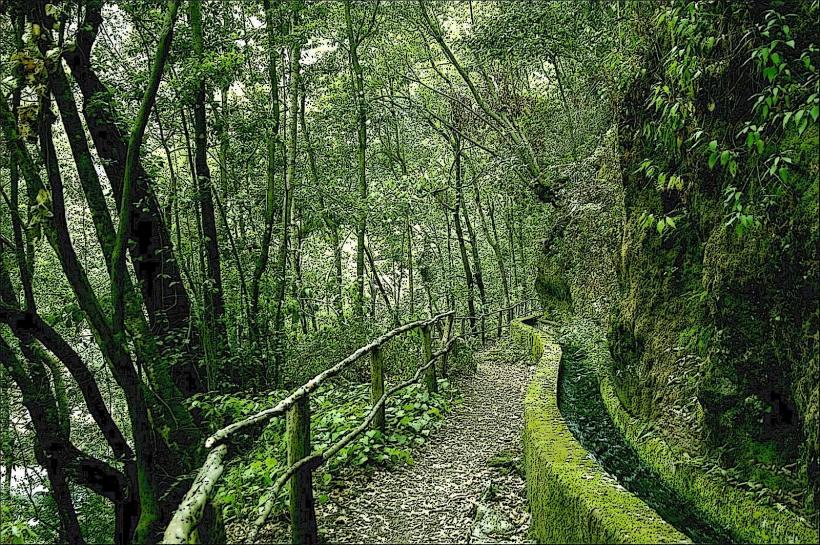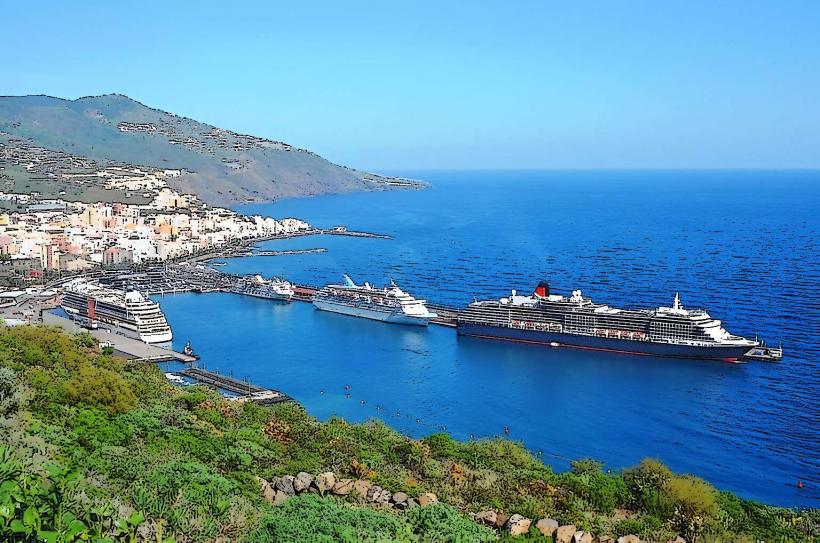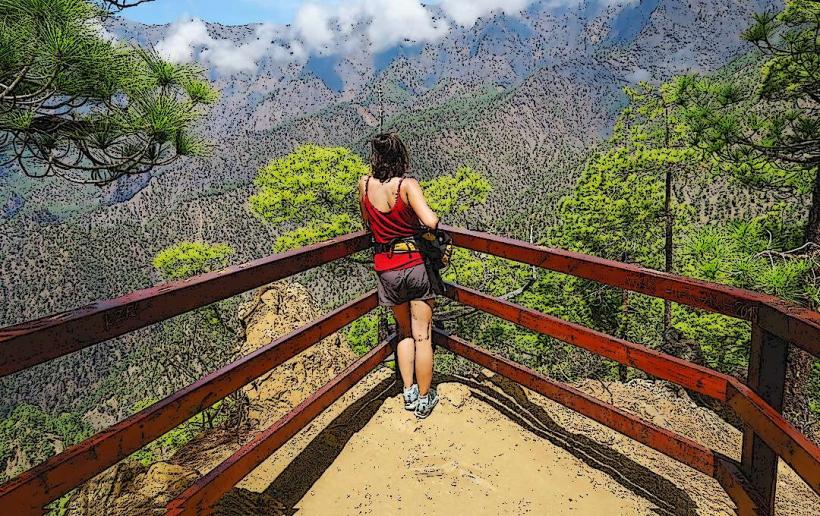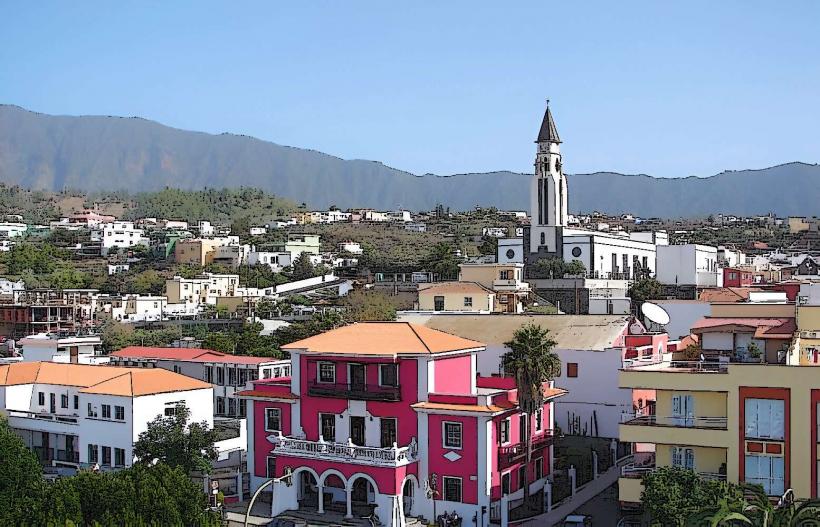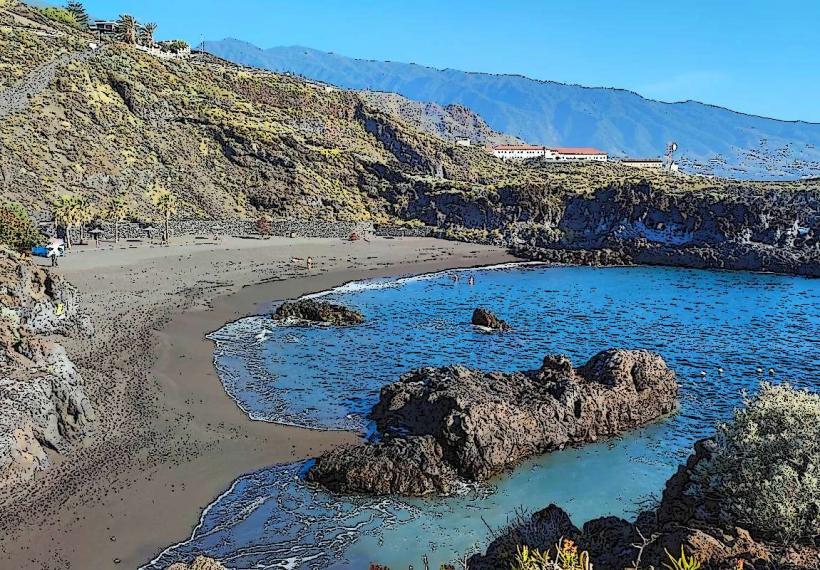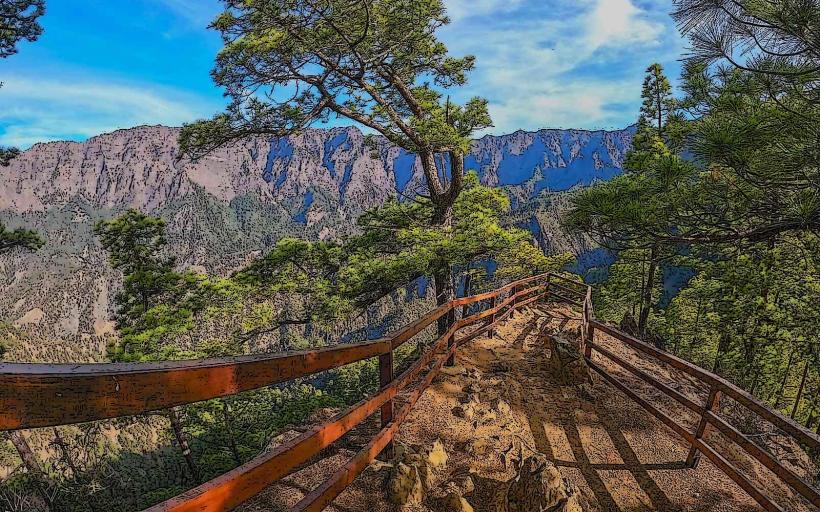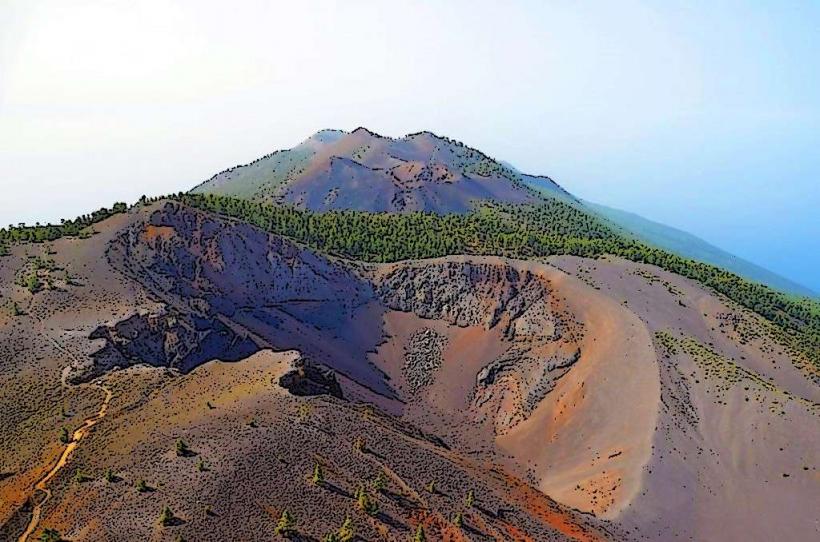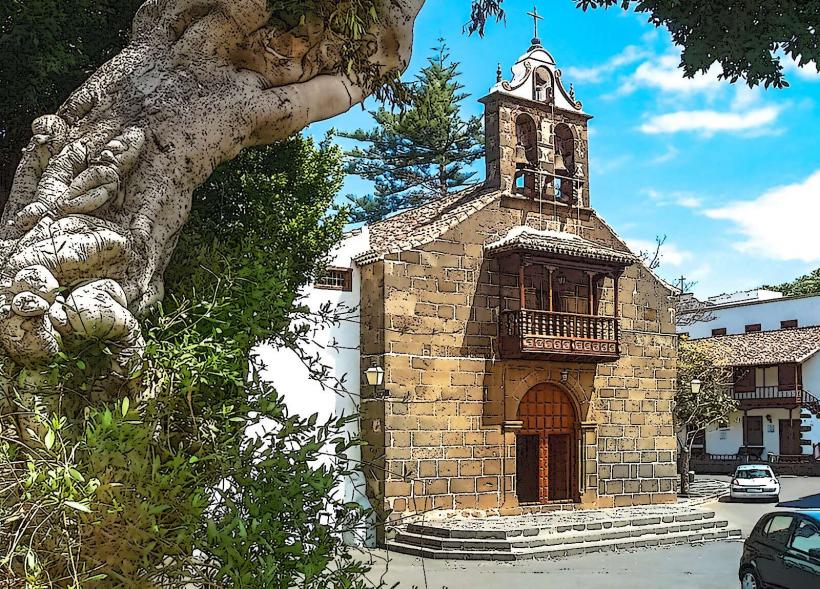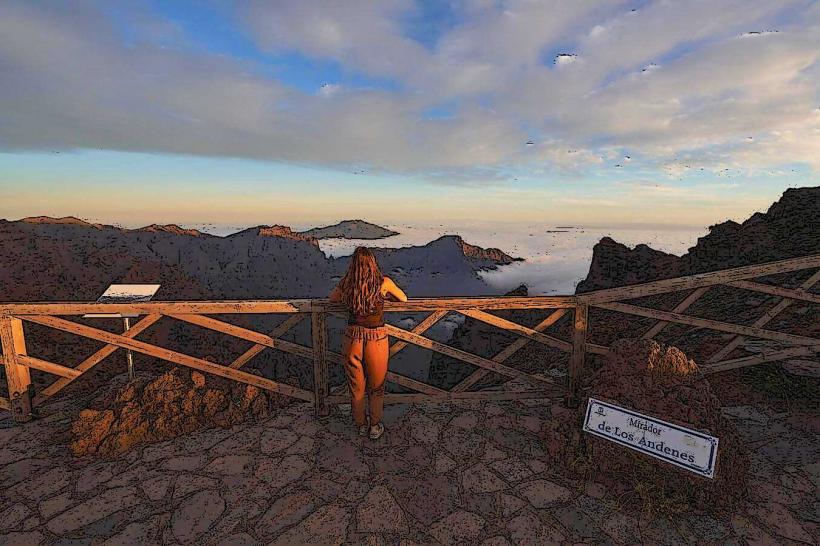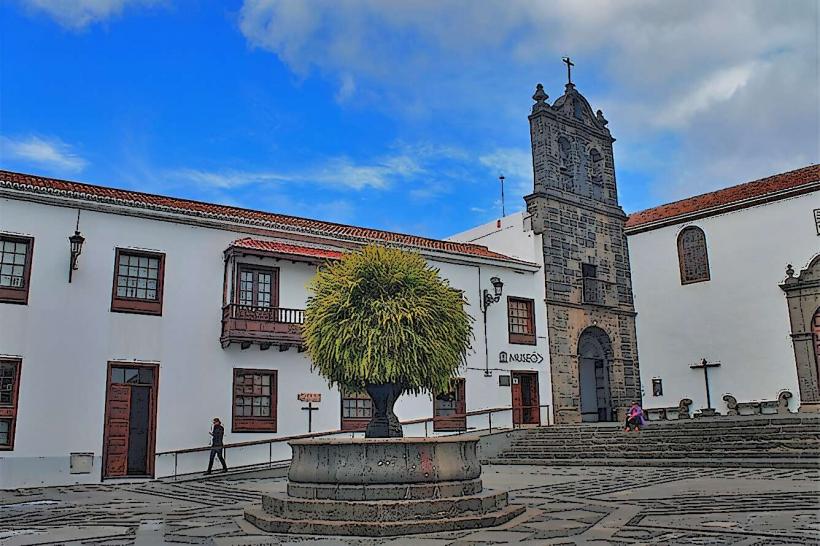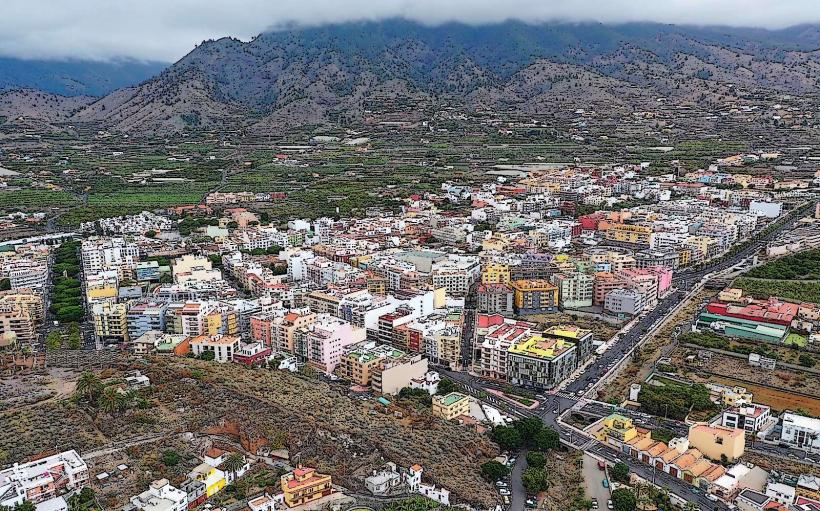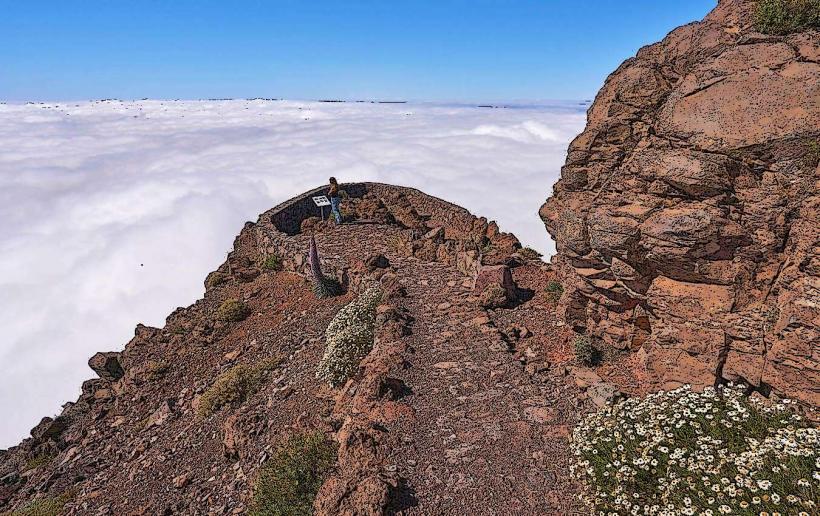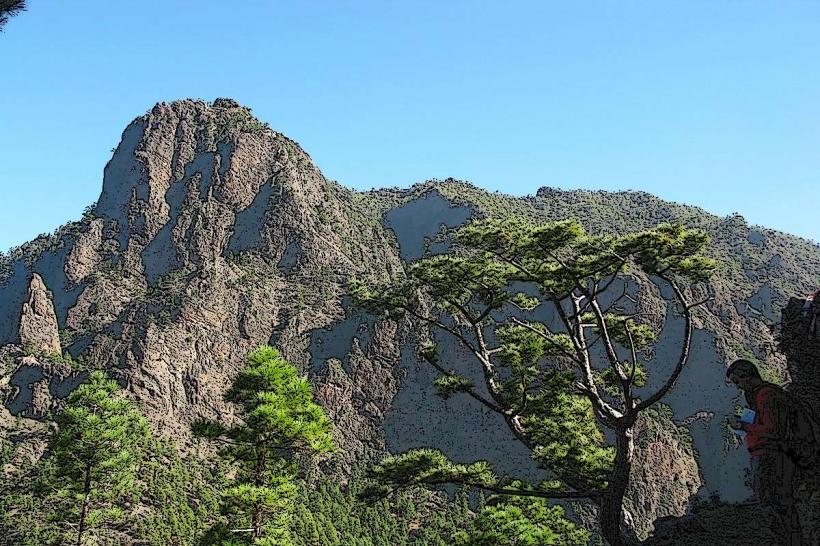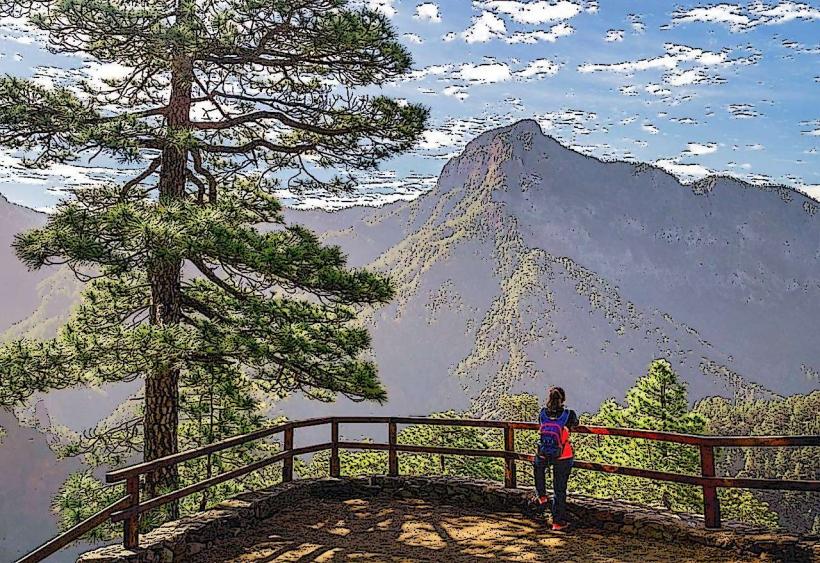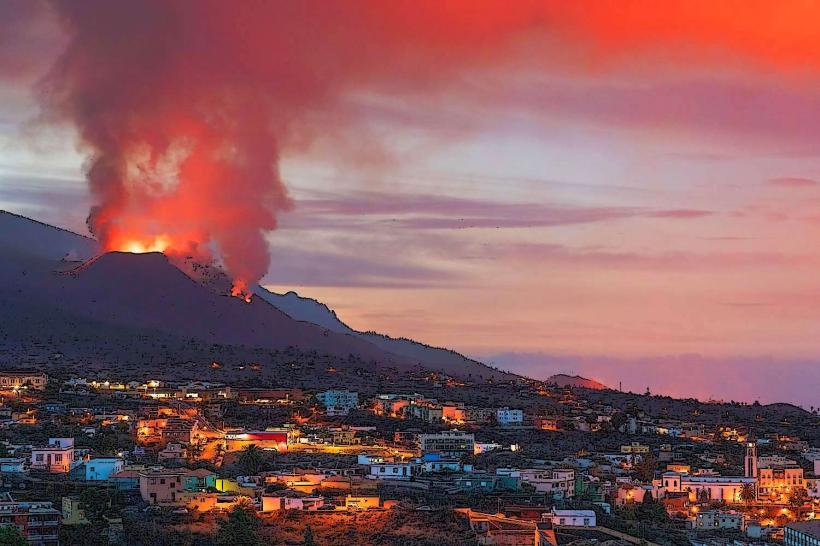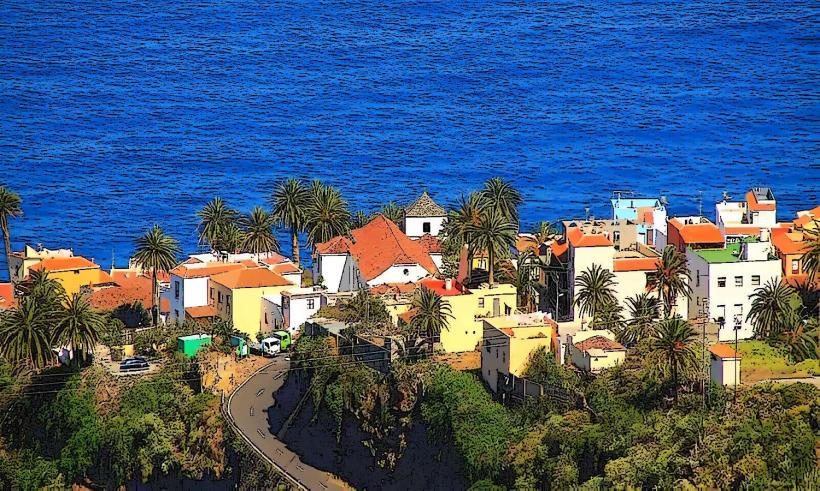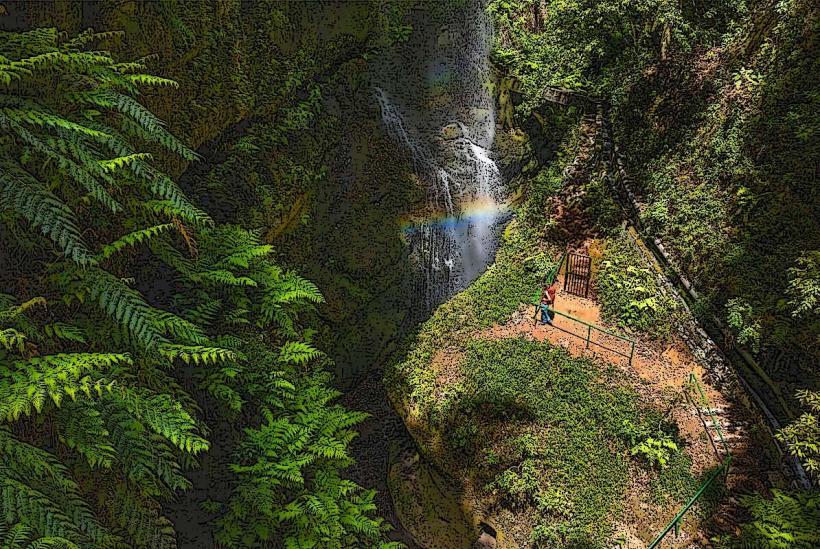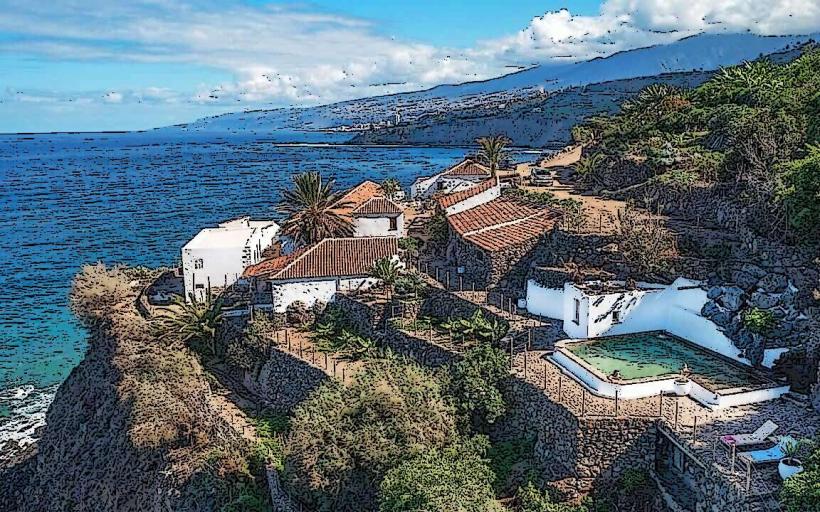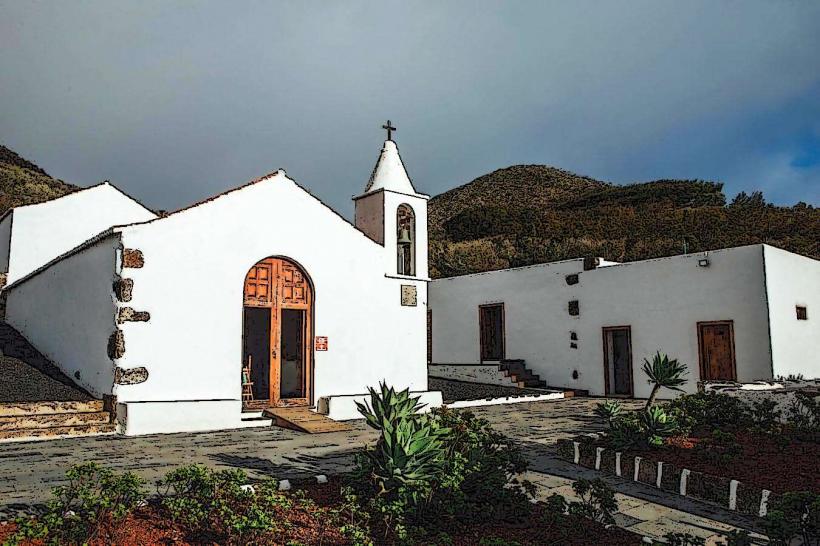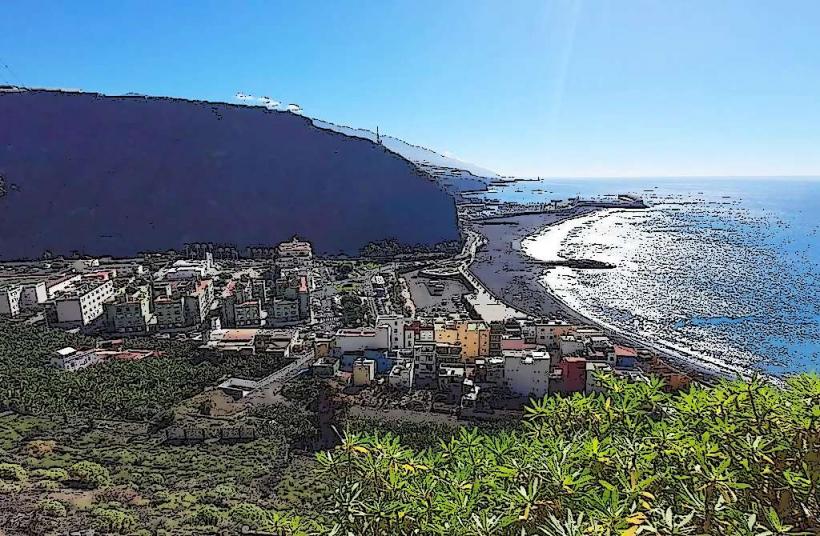Information
Landmark: Caldera de Taburiente National ParkCity: La Palma
Country: Canary Islands
Continent: Europe
Caldera de Taburiente National Park (Parque Nacional de la Caldera de Taburiente) is one of the most remarkable natural areas on the island of La Palma, part of the Canary Islands, Spain. This park is renowned for its stunning landscapes, biodiversity, and geological significance. It was designated as a national park in 1954 and is one of the most visited protected areas in the Canary Islands.
Geography and Landscape
The Caldera de Taburiente National Park is centered around the Caldera de Taburiente, a large volcanic crater formed by the collapse of an ancient volcano. The park covers an area of 46.9 square kilometers and is characterized by its rugged terrain, deep ravines, towering cliffs, and lush valleys. The caldera itself is the focal point of the park, with dramatic cliffs rising up to 2,426 meters (7,959 feet) above sea level.
The park’s geological formation is due to volcanic activity that occurred millions of years ago, and it is a significant example of erosion, with steep slopes and dramatic rock formations.
Natural Features
The Caldera: The caldera is the massive depression formed by the collapse of the volcano's summit. It is encircled by high peaks, the most prominent being Roque de los Muchachos (2,396 meters), which also houses the famous Roque de los Muchachos Observatory. Inside the caldera, visitors find verdant valleys, dense forests, and crystal-clear streams.
Ravines and Waterfalls: The park is home to several ravines, such as the Barranco de las Angustias, which run through the park and create impressive waterfalls and cascades. These ravines are a crucial feature of the landscape and provide habitats for a variety of plants and animals.
Flora: The park boasts a rich diversity of plant life due to its varied altitude and microclimates. It includes ancient Canary Island pine forests (Pinus canariensis), laurel forests, and areas of gorse and madrone trees. The higher altitudes support endemic plants, some of which are rare or endangered.
Fauna: The fauna of Caldera de Taburiente is also diverse, with a mix of endemic and migratory species. Common animals in the park include the Canary Island blue tit, barbary falcon, laurel pigeon, and Canary Island giant lizard. Additionally, the park provides a sanctuary for several species of bats and small mammals.
Hiking and Outdoor Activities
Caldera de Taburiente National Park is a popular destination for hiking, with trails ranging from easy walks to more challenging routes for experienced trekkers. The park is crisscrossed by numerous paths, offering spectacular views of the surrounding mountains, forests, and valleys. Some of the most notable trails include:
Ruta de los Volcanes: This is one of the most famous and challenging trails in the park. It spans about 24 kilometers and offers stunning panoramic views of the volcanic landscapes. It runs along the volcanic ridge and leads to the Roque de los Muchachos, the highest point on the island of La Palma.
Barranco de las Angustias: This trail follows one of the main ravines of the park and leads to the Taburiente River. Along the way, hikers can enjoy the dramatic landscapes, waterfalls, and the rich vegetation that grows in the ravine's fertile environment.
Cumbrecita Viewpoint: For those who prefer a shorter and more accessible hike, the Cumbrecita Viewpoint offers breathtaking views over the caldera and surrounding mountains. It is a popular spot for photography and to appreciate the park's vastness and beauty.
Camping: There are several campsites within the park, offering a chance for overnight stays amidst the stunning natural surroundings. The La Cumbrecita campsite is a popular starting point for hiking and exploration.
Stargazing: Due to the park's remote location and high altitude, it is an excellent spot for stargazing. The clear skies and lack of light pollution make it one of the best locations for astronomical observations. The nearby Roque de los Muchachos Observatory enhances the park's connection to astronomical science.
Conservation and Protection
As a protected area, Caldera de Taburiente National Park is vital for preserving the unique natural environment of La Palma. The park is home to numerous endemic species of plants and animals, some of which are found nowhere else in the world. Conservation efforts focus on maintaining the delicate balance of ecosystems, protecting rare species, and minimizing human impact on the park's pristine environment.
Visitor Information
- Access: The park can be accessed via several entrances, with the Cumbrecita viewpoint being one of the most popular access points for visitors. Roads leading into the park are well-maintained, but visitors should be prepared for winding mountain roads, especially as they approach the higher elevations.
- Visitor Center: The park has a visitor center at El Paso, where tourists can get information about the park, hiking routes, and safety guidelines. The center offers educational exhibits about the park's geology, flora, and fauna.
- Opening Hours: The park is open year-round. However, it's best to check the weather before planning a trip, as conditions can change rapidly, especially at higher altitudes.
- Best Time to Visit: The best time to visit is during the spring and autumn months when the weather is mild and the hiking trails are most accessible. Winters can be cold and sometimes snowy at higher elevations, and summers, while warm, are also popular for hiking.
Significance
- UNESCO Biosphere Reserve: In recognition of its rich biodiversity and importance for conservation, La Palma, including the Caldera de Taburiente National Park, was designated a UNESCO Biosphere Reserve in 2002. The designation helps highlight the island's unique ecosystems and its role in global environmental conservation efforts.
- Geological Importance: The park is also important from a geological perspective. Its volcanic origin provides valuable insight into the formation of the Canary Islands and the dynamic volcanic processes that shaped the island.
Conclusion
The Caldera de Taburiente National Park is a true natural gem, offering visitors the opportunity to explore one of the most pristine and dramatic landscapes in the Canary Islands. Whether you're an experienced hiker, nature lover, or stargazer, the park offers a wealth of activities and experiences to immerse yourself in the beauty of La Palma’s natural world. Its combination of rich biodiversity, stunning geological formations, and outdoor adventure make it a must-visit destination for those traveling to the island.

